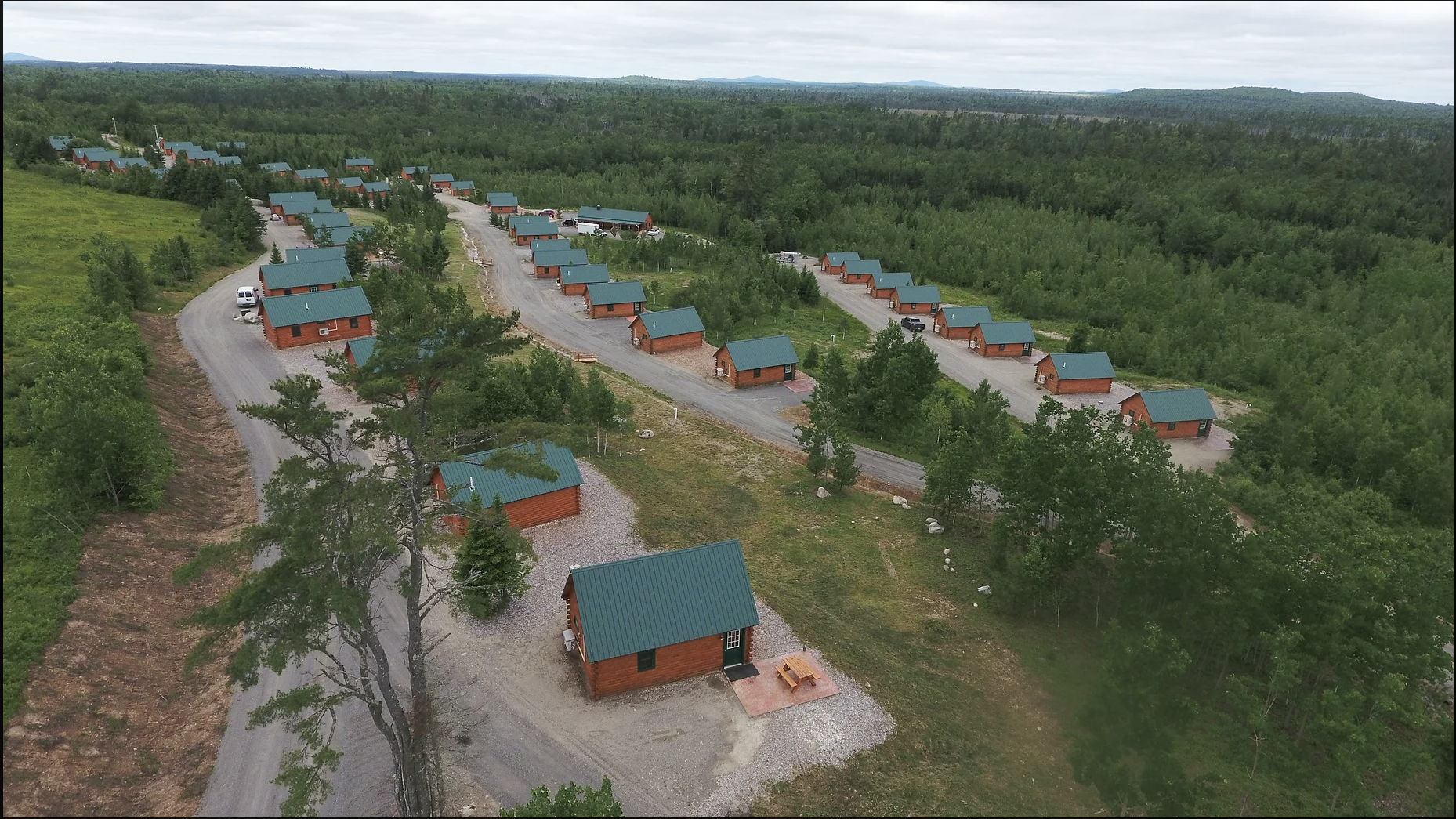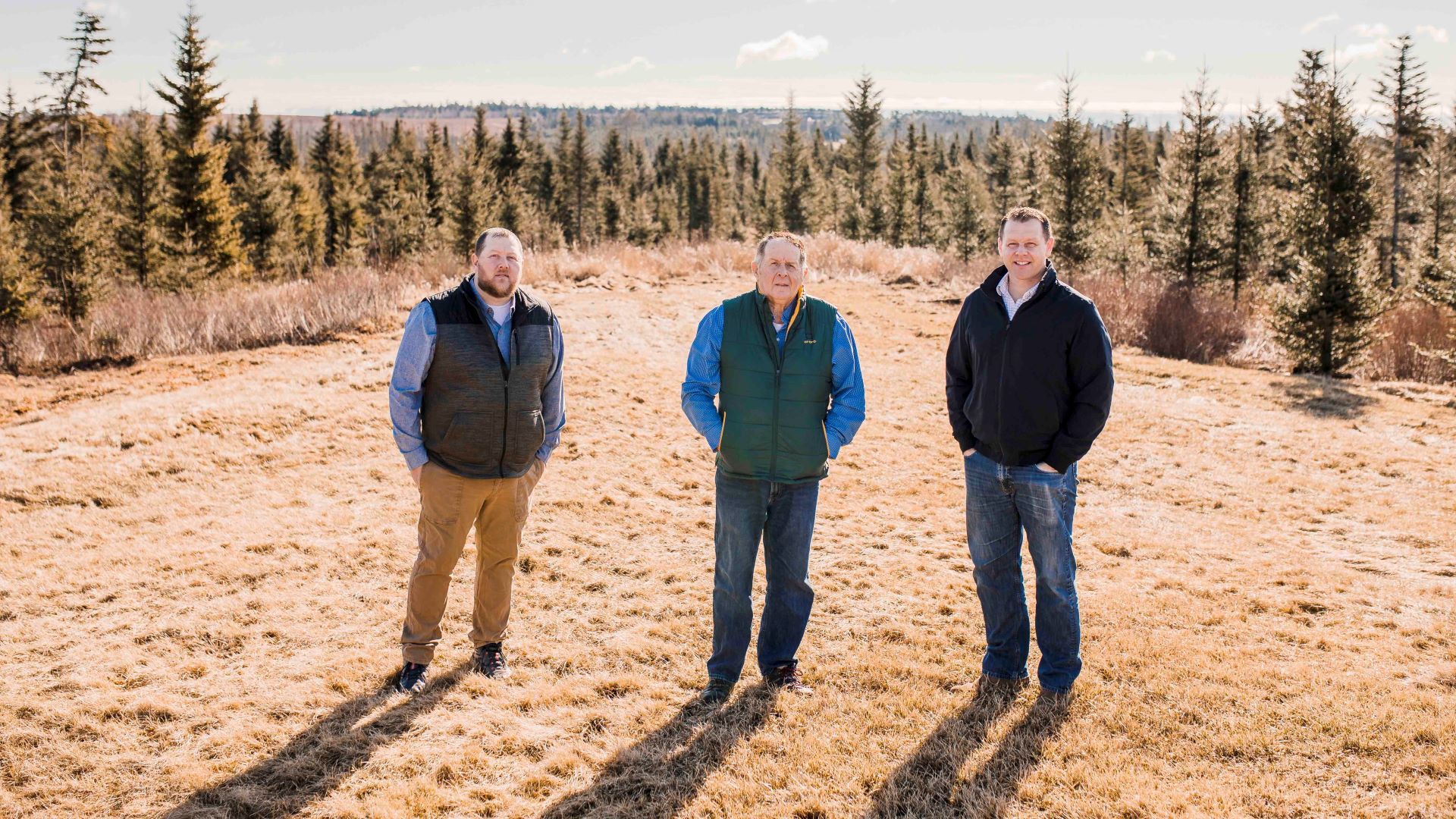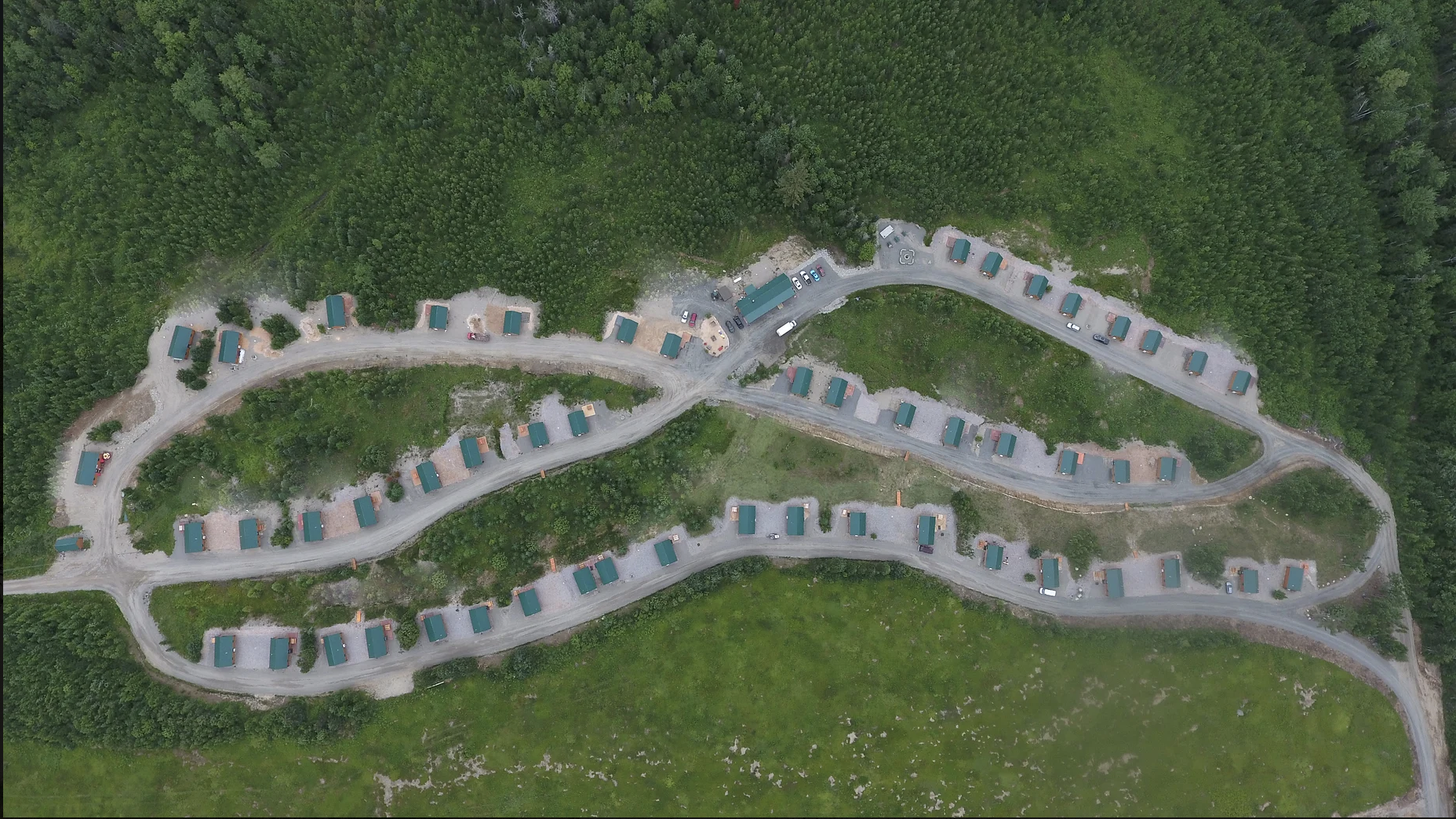The company behind the scrapped Flagpole of Freedom project met a March 1 deadline required to keep its campus of 52 cabins, a restaurant and accompanying roads in the woods north of Columbia Falls, at least for now.
A consent agreement approved by Maine’s environmental board late last month required Worcester Holdings LLC to submit an after-the-fact site law application by March 1 and fined the company $250,000 for building its “Flagpole View Cabins” without permits.
Maine Department of Environmental Protection staff have 15 days to review the application for completeness before sending it to other state agencies, including the Department of Inland Fisheries and Wildlife.
If regulators ultimately approve the application, the company will have to comply with the terms set out by the state or risk losing the development entirely.
If Worcester’s application is denied, the company will have to raze its cabins and restore the roughly seven-acre development to its previous condition. Regardless of whether the application is approved, the $250,000 fine will stand.
In addition to seeking permission for its existing structures, Worcester is also proposing to construct a 9,200-square-foot entertainment pavilion and accompanying parking area, according to a copy of Worcester’s application, which The Maine Monitor received from the town of Columbia Falls.
Members of the state Board of Environmental Protection, the citizen board that oversees DEP, were skeptical that Worcester would be able to recover years-old information they suspect may have been lost to time and marred by construction.
Worcester Holdings, which does business as Worcester Wreath, started building the cabins in 2019 and did not submit site reviews or studies to the Maine Department of Environmental Protection before or during construction, Ron Mongeon, director of the DEP’s eastern Maine office, said at a hearing last week.
The company continued to advertise the cabins for rent even after being notified of violations by DEP, and failed to meet a February 2023 deadline to submit an after-the-fact permit application.
Board members feared that without baseline information on the site’s previous condition, there isn’t a clear image of the development’s footprint, and regulators won’t be able to tell if developers took special measures during construction to reduce erosion and protect nearby wildlife habitat.
The development site drains into a wetland area prior to entering Tenney Brook, a tributary to the Pleasant River that then flows into Pleasant Bay, the application notes.
It’s “kind of hard to resurrect what’s not there anymore now that we’ve buried it,” said Susan Lessard, the board chair, at the Feb. 28 meeting.
After-the-fact permitting of this kind is relatively uncommon in Maine, with only a handful of applications filed each year, according to Dawn Hallowell, licensing director for the DEP’s Land Bureau.
Even though Worcester’s development is already built, Hallowell said the same rigorous standards for on-time site law applications are required of after-the-fact applications.
“There’s no special provision for the fact that it’s already built,” she said.

There are various methods for determining a site’s previous condition to meet the required data for a site law application, like remote sensing, Hallowell said. Environmental experts also have the opportunity to return to the site and measure different features, like stormwater management.
“I haven’t really encountered a situation where they were not able to provide the data required for the site law review,” Hallowell said. “Usually they can get it.”
If they can’t, that would be a problem. In that case the Worcesters would have a roughly 30-day window to fill in missing information, Hallowell said.
“And if they can’t, if it’s just not going to work, the department would issue a denial or (Worcester) would have the opportunity to withdraw the application,” Hallowell said. “And the result is kind of the same … they would need to come up with a restoration plan.”
At the Feb. 28 board meeting, Lessard, the chair, was especially unsettled by what damages may have occurred and Worcester’s defiance in flouting state regulations.
“It feels egregious to me in the way that the department has been ignored and the lack of information that any of us have to decide if anything that shouldn’t have been disturbed, was disturbed,” Lessard said. “There’s no way for us to know that.”
Jeff Greene, a Columbia Falls select board member, said Worcester’s defiance of the DEP and development law in building the cabins was emblematic of what could have come with the company’s Flagpole of Freedom Park.
“It is a bit of a telltale of what would have … come as far as the Flagpole of Freedom Park would be concerned,” Greene said of the cabins.
Board members inquired about what information — if any — DEP staff had on the status of habitat for the upland sandpiper, a tall, thin bird that thrives in grasslands and barrens.
The upland sandpiper has a ‘threatened’ status in Maine and has been documented in the area of the Flagpole View Cabins development, according to the Maine Department of Inland Fisheries and Wildlife.
Board member Steven Pelletier asked DEP staff during the meeting whether there was documentation of disturbances to upland sandpiper habitat during construction.
Mongeon, the DEP staff member, said that would be analyzed in the review of Worcester’s site law application and if it didn’t meet standards, Worcester wouldn’t receive a permit.
Still, Pelletier and others’ central criticisms remained: “The impacts have occurred, so we don’t know what might have been there,” Pelletier said.
The Maine Department of Inland Fisheries and Wildlife raised this point in a letter Worcester included in its site law application.
An attorney for the Worcester family did not respond to a request for comment.

In its letter, Inland Fisheries and Wildlife staff wrote that upland sandpipers are acutely sensitive to imposing structures within their habitat, which can disrupt the 75-100 acres of open space they need. The birds “are among the rarest” in the Northeast, according to the agency.
Resource biologist Ciara Wentworth added that had the department been consulted before construction, it would have suggested a number of safeguards — like mapping the bird’s nesting activity and creating buffers around those areas, as well as pausing construction during its mating season through spring and summer.
Instead, Wentworth wrote, “Given that construction has already occurred immediately adjacent to upland sandpiper habitat, we anticipate there were direct and indirect (displacement) impacts to this species during the construction phase.”
How much disturbance occurred is unknown because of the lack of mapping, Wentworth said, and could continue with the presence of the structures. The department recommended Worcester hire a biologist to assess habitat loss and, as part of the permit review, compensate any one acre of habitat lost to development with eight acres of grassland.
Laura Minich Zitske, a wildlife ecologist for Maine Audubon, said she was surprised but grateful for the enforcement action DEP took and the role Inland Fisheries and Wildlife has during the permit review to elevate these habitat-protecting protocols.
“It’s quite atypical for DEP and IFW to respond in this way, but normally people don’t just do these large-scale construction operations without permitting,” Zitske said. “There are a lot of things that we can do to make sure that we can use the property while still accommodating wildlife.”
The $250,000 fine and stringent permitting requirements that are part of the consent agreement take into consideration any impacts to upland sandpipers during construction, according to Hallowell, the DEP licensing director. She added that the state will also determine any lingering effects from the development in consultation with Inland Fisheries and Wildlife.
While Board of Environmental Protection members were troubled by Worcester’s actions, they were also glad enforcement action had been taken after four years of disregard to development law.
Board member Barbara Vickery said she hopes the department’s review can make up for lost time and scrutinize the development the way it should have been before Worcester first broke ground.
She said, “I’m eager that … something can happen … that gets this show on the road where it should have been years ago. That would be a really good thing.”







